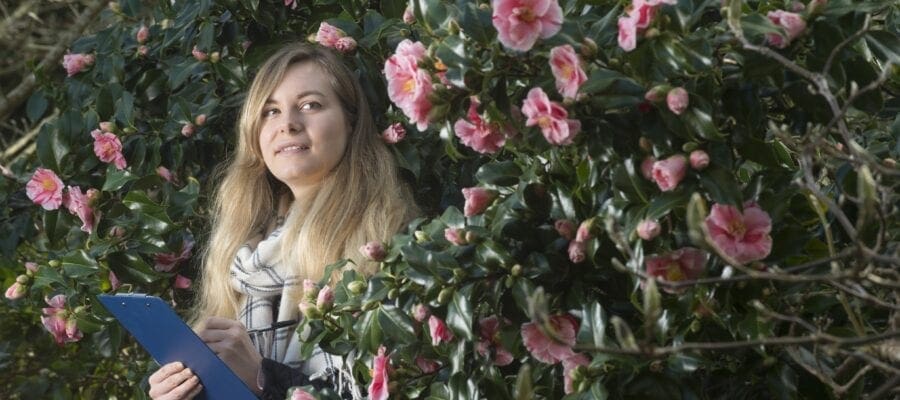12th annual Valentine’s Flower Count
National Trust garden teams in the south west [1] have conducted their annual flower count for Valentine’s Day and although spring seems to be on the way, just as we would expect, what is noticeable is how many scented plants are already out in flower at this early time of year.
Gardeners from across National Trust gardens in the south west recorded 1,737 plants blooming in this year’s 12th annual Valentine’s Flower Count, which is 34% down on last year’s figure of 2,644. However, while numbers are down on 2016, they are still higher than the previous three years [2].
For the second year running, Saltram in Devon had the highest number of flowers recorded with 176 blooms (193 in 2016).
The more normal and cautious approach of spring compared with last year, means that we can enjoy the early flowering plants for a bit longer as the cooler conditions will help extend the flowering season of the earlier blooms and later flowering plants are on hold for warmer, sunnier conditions.
Ian Wright, the National Trust’s Gardens Advisor in the South West, said: “Our gardens are full of buds ready to burst into flower. Although our survey shows that spring isn’t here quite yet, when it does arrive it will be a good one.
“Alongside the usual signature plants of spring such as magnolias, camellias and rhododendrons, what is often overlooked is the amount of plants that have highly scented flowers at this early time of the year. They’re all out there advertising their presence by pushing out scents like perfume counters in a department store trying to attract their insect customers, which are few and far between at this early time.
“We have reports of daphne, mahonia, winter flowering honeysuckle, and witch hazel to name but a few, all of which give off sweet heady aromas and can be enjoyed at many of our gardens such as at Killerton, Knightshayes, Cotehele and Hidcote. Some types of snowdrops and other early spring bulbs add to this annual attack on your senses producing subtle and beautiful scents.”
Figures from the Met Office confirm that 2016 was one of the warmest two years on record. Such changes to our weather pose the single biggest conservation challenge to National Trust gardens and places. How we all garden, whether in a National Trust garden or at home, what plants we grow and where, may need to change.
In 2008, 3,335 plants in bloom were recorded in Devon and Cornwall, marking the earliest spring so far recorded.
Gardens in the South West are usually the furthest advanced in the UK with early spring blooms, but this year numbers are down on last year which shows our spring may be back to normal for this year at least with 907 less blooms.
In Cornwall 595 blooms were counted compared to 897 in 2016. In Devon there were 707 blooms this year compared to 1041 in 2016.
Ian Wright added: “Comparing the number of plants across our gardens on a set day every year gives us a real insight into how our gardens respond to weather patterns, and is a useful ‘barometer’ for the season ahead.”











